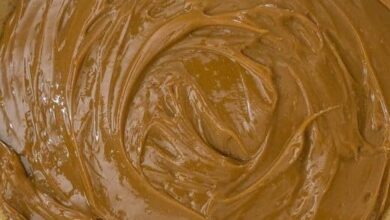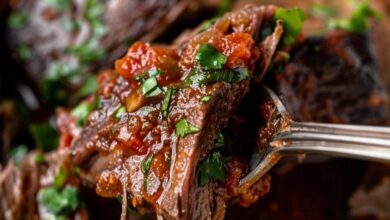Egg Salad

Experience the comforting embrace of a well-made Egg Salad—a dish that has stood the test of time as a beloved classic. Whether as a sandwich filling, a topping for greens, or a standalone delight, Egg Salad offers a simple yet irresistible combination of flavors and textures. Our comprehensive guide will help you craft the perfect Egg Salad to enjoy on any occasion.
ADVERTISEMENT
Here’s the list of ingredients needed to create Egg Salad:
ADVERTISEMENT
| Ingredient | Quantity |
|---|---|
| Hard-Boiled Eggs | 6 large |
| Mayonnaise | 1/4 cup |
| Dijon Mustard | 1 teaspoon |
| Fresh Lemon Juice | 1 teaspoon |
| Chopped Celery | 1/4 cup |
| Chopped Red Onion | 2 tablespoons |
| Chopped Fresh Dill | 1 tablespoon |
| Salt | To taste |
| Black Pepper | To taste |
| Paprika | For garnish |
| Sliced Bread or Greens | For serving |
Creating the Recipe:
Follow these steps to craft the perfect Egg Salad:
ADVERTISEMENT
- Prepare Hard-Boiled Eggs: Start by boiling the eggs until they are hard-boiled. Once cooked, peel and roughly chop them.
- Mix the Base: In a mixing bowl, combine the mayonnaise, Dijon mustard, and fresh lemon juice. Whisk the ingredients together until smooth and well incorporated.
- Combine Ingredients: To the mayo-mustard mixture, add the chopped hard-boiled eggs, chopped celery, chopped red onion, and chopped fresh dill.
- Season and Mix: Gently fold the ingredients together until they are evenly coated in the creamy mixture. Season with salt and black pepper to taste.
- Adjust Consistency: If you prefer a creamier texture, you can add more mayonnaise. For a lighter option, use Greek yogurt or sour cream instead.
- Chill and Serve: Cover the Egg Salad and refrigerate it for at least an hour before serving. Chilling allows the flavors to meld and enhances the taste.
- Serve and Garnish: When ready to serve, scoop the Egg Salad onto sliced bread for a classic sandwich or over a bed of greens for a nutritious salad. Garnish with a sprinkle of paprika for a touch of color.
Expert Tips for Perfect Egg Salad:
- For an extra layer of flavor, consider adding a teaspoon of chopped capers or a dash of hot sauce.
- Experiment with different herbs such as chives, tarragon, or parsley to tailor the salad to your taste.
FAQs:
Q: Can I use Greek yogurt instead of mayonnaise? A: Certainly. Greek yogurt offers a tangy and protein-rich alternative to mayonnaise.
Q: Can I make the salad in advance? A: Absolutely. Egg Salad can be made a day in advance and stored in the refrigerator. Just give it a good mix before serving.
Q: How do I prevent the eggs from turning green around the yolk? A: Cook the eggs just until they are hard-boiled and promptly place them in an ice bath to cool. This prevents the greenish hue that can sometimes form on the yolks.
Q: Can I add other vegetables? A: Certainly. Chopped bell peppers, cucumber, or pickles can add a refreshing crunch to the salad.
Q: Is there a vegan version of Egg Salad? A: Yes, you can make a vegan version using tofu as a replacement for eggs and vegan mayonnaise.
Q: Can I customize the seasonings? A: Absolutely. Feel free to add your favorite spices, herbs, or even a dash of Worcestershire sauce for extra depth of flavor.
Simple Pleasures, Timeless Flavor
Indulge in the classic goodness of Egg Salad—a dish that holds a special place in many hearts. With its creamy texture and comforting taste, Egg Salad continues to bring joy to gatherings and everyday meals alike. Enjoy its simple pleasures and savor the nostalgia of each bite.




